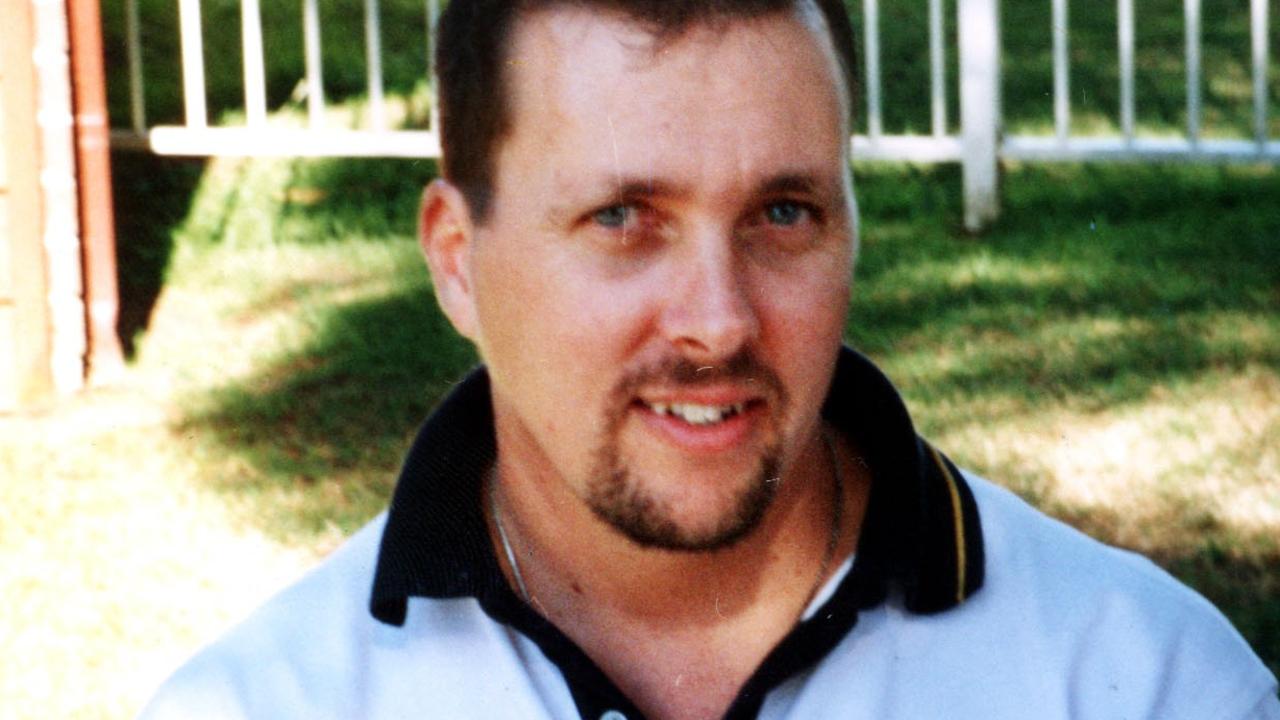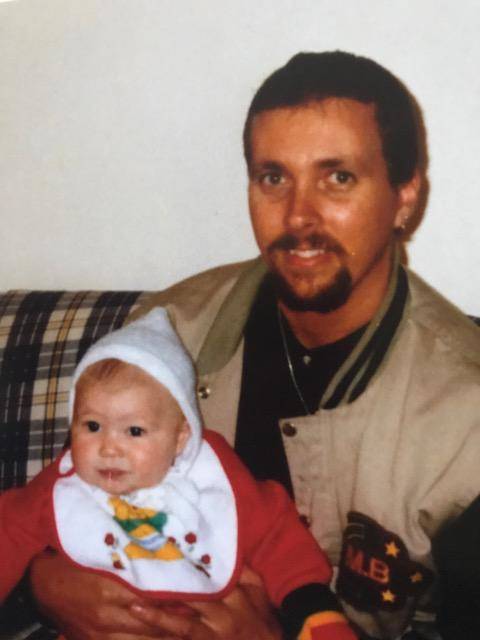



| Ian DRAPER | |
| DOB: | 1964 |
| CIRCUMSTANCES: | |
| Ian Draper was last seen at 3.30am on 3 August 2001. He was seen leaving the Mt Pritchard Community Club, Sydney after finishing work, in a white Ford Falcon. The vehicle was later located at Leppington on September 17, 2001, unlocked and undamaged. A forensic examination of the vehicle was later conducted; however, no further evidence was obtained. | |
| Reported missing to: Campbelltown Police Station. | |
As Missing Persons Week 2021 commences, the NSW Government, together with the NSW Police Force, has announced a $1 million reward regarding information into the disappearance of Sydney man, Ian Draper, nearly 20 years ago.
Ian Charles Draper – then aged 37 – was last seen leaving his workplace at Mount Pritchard Community Club, Mount Pritchard, driving his 1992 white Ford Falcon on Friday 3 August 2001.
Mr Draper’s vehicle was later located at Leppington on Monday 17 September 2001, unlocked and undamaged.
A forensic examination of the vehicle was later conducted; however, no further evidence was obtained.
Initial inquiries conducted by Cabramatta Local Area Command confirmed that Mr Draper had not used or accessed his phone or bank accounts since his disappearance.
In 2004, a Coronial Inquest found Mr Draper had died; however, the circumstances could not be determined.
A year later, the NSW Government announced a $100,000 reward for information relating to his disappearance.
Since 2008, the State Crime Command’s Homicide Squad has conducted extensive investigations into Mr Draper’s death as part of Strike Force Tuno II.
Despite these efforts, no one has been charged in relation to Mr Draper’s disappearance, and his body has never been located.
As inquiries continue, police are renewing their appeal to the community to come forward with any information that may assist detectives with their ongoing investigations.
Minister for Police and Emergency Services, David Elliott, said he hopes the ten-fold increase in the NSW Government reward will be the catalyst for someone to come forward with new information.
“Tomorrow – August 3 – is exactly 20 years since Ian was last seen; that’s 20 long years his family has spent searching for answers,” Mr Elliott said.
“The NSW Government has increased the reward for information into Ian’s disappearance to $1 million, which demonstrates just how seriously we support the Homicide Squad’s investigation.
“This is a significant inducement for whoever has that crucial piece of information, to come forward and tell police what happened to Ian,” Mr Elliott said.
Homicide Squad Commander, Detective Superintendent Danny Doherty, said investigators are committed to getting justice for Ian and providing answers to his family.
“Tomorrow marks 20 years since Mr Draper was last seen leaving his workplace in Mt Pritchard driving his 1992 white Ford Falcon,” Det Supt Doherty said.
“Homicide Squad detectives have been working closely with the Missing Person Registry to re-examine all available information and evidence in this matter in an effort to uncover what happened to Ian that afternoon.
“Investigations are ongoing, and today’s reward is being offered for any information leading to an arrest or the recovery of Mr Draper’s remains.
“After two decades of unanswered questions, Ian’s family deserve to know what happened to their son and to lay him to rest,” Det Supt Doherty said.
Ian’s mother, Janet Draper, said her family miss Ian more than words can express.
“Last week was Ian’s birthday and we have now spent 20 years without him, missing out on celebrating these milestones and many other special family occasions,” Mrs Draper said.
“Ian was a loving son, brother, uncle and friend and taken far too soon.
“If anyone in the community has any information at all about what happened to our son or can help locate his remains, please, please, contact the police,” Mrs Draper said.
Anyone with information that may assist detectives is urged to contact Crime Stoppers: 1800 333 000 or https://nsw.crimestoppers.com.au. Information is treated in strict confidence. The public is reminded not to report information via NSW Police social media pages.
7 August 2005 - NSW
Police
Information Sought On Missing
Minto Man
Cabramatta Detectives have issued a new
appeal for information concerning a person missing since August last year.
Detective Senior Constable Tracy Nelson said there are serious concerns for the
welfare of Ian Charles Draper, of Minto, who was aged 37 when he went missing
after finishing work on 3 August 2001.
"Mr Draper finished work at the Mt
Pritchard Community Club about 3.30am was last seen leaving the club in his
white Ford Falcon, NSW registration ACD 45Q," Snr Cst Nelson said. "He was
wearing long dark pants, a blue shirt and a blue fleece-lined jacket. "Mr Draper
has not been sighted since that time and his personal accounts have not been
accessed." Snr Cst Nelson said Mr Draper's car was found near Leppington
about a month after his disappearance.
Detectives and Mr Draper's family are
hoping that someone may have information about his whereabouts or the
circumstances of his disappearance," she said.
Police have also received two anonymous
letters concerning Mr Draper's appearance and we are anxious to speak with the
person who wrote them. Anyone with information they feel may be relevant to this
investigation is urged to call Cabramatta Police on 9725 8999 or Crime Stoppers
on 1800 333 000.
Callers to Crime Stoppers can remain
anonymous if they wish and may be liable for rewards of up to $1000.
Ian's Mum Janet has these words -
Ian Draper has been missing since August 3, 2001. He was 37 when he left the
club where he was working in Sydney's outer west. He'd be 40 now. His car was
found six weeks later, but there were no clues as to his whereabouts. His family
now fears the worst. Ian's mother, Janet, tells her story...
Our family last saw Ian three years ago. He did shift work at the Mount
Pritchard and District Community Club. On Friday August 3, he finished at 3am
and left in his car, but he never arrived home. His white Ford Falcon was found
six weeks later a few kilometres away.
Five weeks before he went missing, Ian had ended up in hospital after his drink
was spiked at the Minto pub near where he was living. We were worried, but you
hear a lot about that sort of thing happening these days. He went back to work
again and we thought it was all over.
When he went missing, it was hell. I had to talk to the media, among others, and
I wasn't too good at it at first. We used to go out every day to search. Then
we'd all come back and try to work out where to look next.
Ian's never been into drugs, but whether he was involved with anybody he
shouldn't have been, we just don't know — there are some really bad people
around. The trouble is, Ian was a very soft-hearted person and easily led. He'd
befriend anyone who was down and out, saying, "Oh, they need help."
He wouldn't have spoken to us if anything was wrong. Knowing Ian, he wouldn't
have wanted to get his family involved.
I went around the homeless shelters once, in case Ian was on the street. I've
tried everything. I've even been to a clairvoyant. We were very close — I've
lost my son and my best friend.
Ian had a girlfriend at the time and they were planning to get engaged. He was
really close to his brother and sister as well. His brother had a breakdown
after Ian went missing and wasn't able to work for some time.
Before all this happened I was very shy, but something like this changes you. I
saw a counsellor and all I did was bawl my head off. Eventually I started
talking.
We miss Ian so much! The worst thing for us is not knowing what's happened.
- with thanks to WOMAN'S DAY magazine

Janet Draper has already used DNA checks to help
search for her missing son, Ian.
Photo: Brendan Esposito
Cardboard boxes fill the shelves lining the walls of the bone room at Glebe morgue. After sometimes decades in cold storage, their contents hold new hope of solving some old and painful mysteries.
In a huge undertaking to reduce the 400 long-term missing persons cases in NSW, skeletal remains held in the mortuary will soon be sent to the United States for DNA testing.
Already police have been gathering DNA samples from relatives of every person reported missing more than one year ago and sending them to a laboratory in New Orleans.
About 120 samples of mitochondrial DNA have been taken from maternal relatives of the missing and 45 sent for analysis. It costs $US1000 ($1300) to analyse a mouth swab and $US1800 to test bone.
Australia's first missing persons DNA database means about 60 of those sets of remains will offer some hope of burying decades of uncertainty.
Janet Draper is someone who won't find answers to her missing son Ian's whereabouts in the collection of almost 200 skeletal remains held by the Department of Forensic Medicine at Glebe. Mrs Draper insisted two years ago police take a sample of her mitochondrial DNA, pre-empting the current project which is expected to take at least another year to complete.
"I did push to have it taken," the 64-year-old says. "I'm a person that's getting a bit older and Ian may not be found for a while yet. I want the police to be sure that he can be identified."
Ian Draper, a barman then 37, was last seen leaving Mt Pritchard & District Community Club at 3am on August 3, 2001. His car was found at Bringelly six weeks later. Mrs Draper believes her son was murdered.
Each year approximately 30,000 people are reported missing in Australia, almost a third of them in NSW. More than 99 per cent of these are found. Last financial year, NSW Police received 9335 reports of missing persons, and 99.4 per cent of them were found, 73 per cent within three days.
All within the 1 per cent or fewer cases which remain unsolved after 12 months are added to the long-term missing. This grows by 40 to 50 a year.
Some will be found alive or their bodies identified, but about 400 people form the core of those missing since record-keeping was standardised in the 1960s.
With genetic profiling being increasingly used to identify human bones, every name on that list represents work sourcing a relative's DNA if a potentially matching body is found.
Gathering that material now will give police a permanent resource that can be used to positively identify or discount any human remains as belonging to one of those 400 names.
Once a broad database is created, police can establish a system triggering requests for DNA from family once any person has been missing for 12 months.
While the database's greatest worth will be in the future when bodies are found, it also provides the potential to identify some old, unidentified remains.
Dr Denise Donlon, from the University of Sydney, told the Herald the unit considers about 60 sets worthy of extracting DNA to check against the database.
The almost 200 sets of remains in the facility range from those of Aborigines who died before European settlement to a foot found on a beach in February this year. Most were found between the 1960s and 1990s.
A capacity to check any fresh remains against the profiles of hundreds of missing persons would help every family on the database, the missing persons unit's Mark Samways said. "The main thing is we can make the process happen quicker for families," he said. It will take about four weeks to compare a DNA profile against the database.